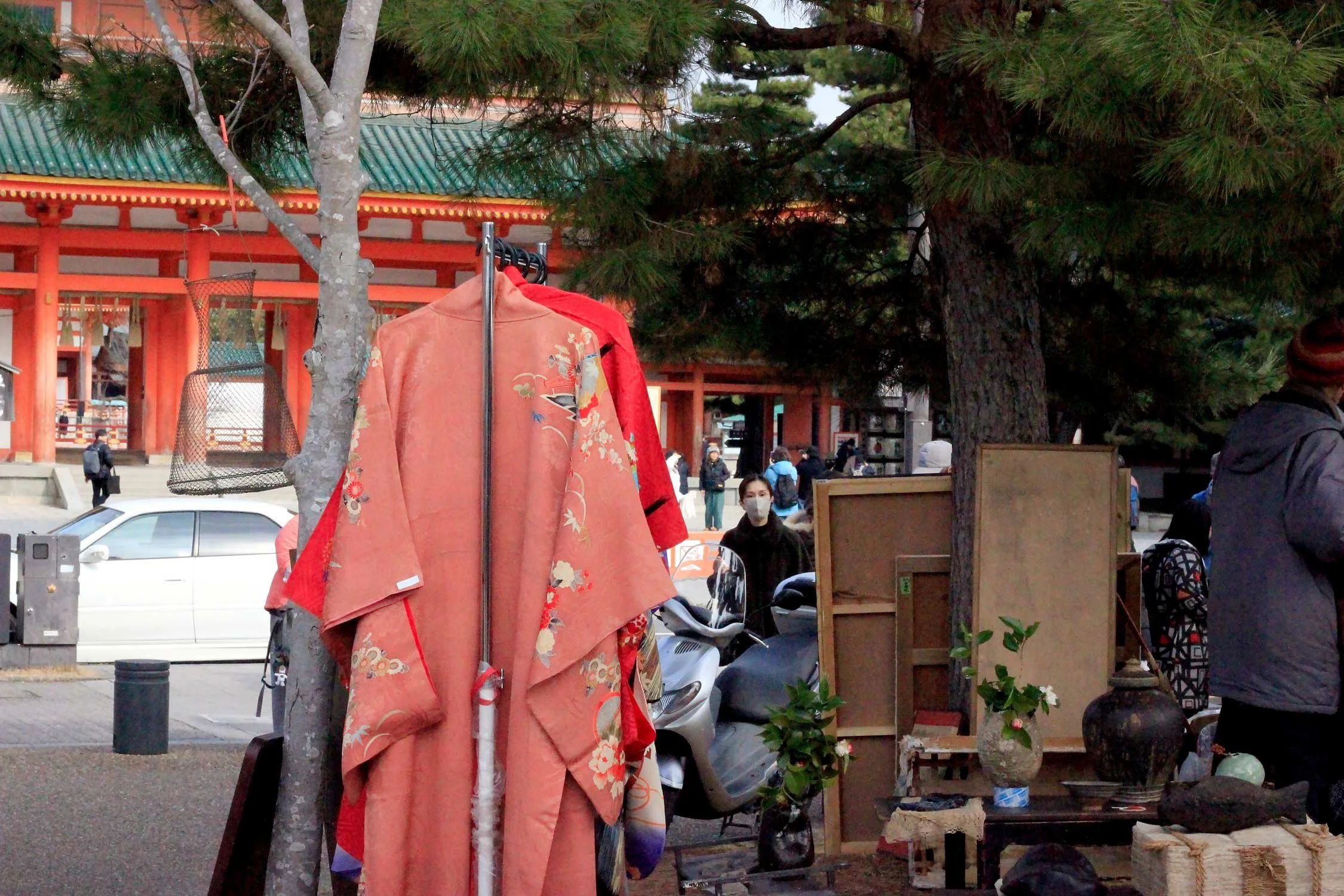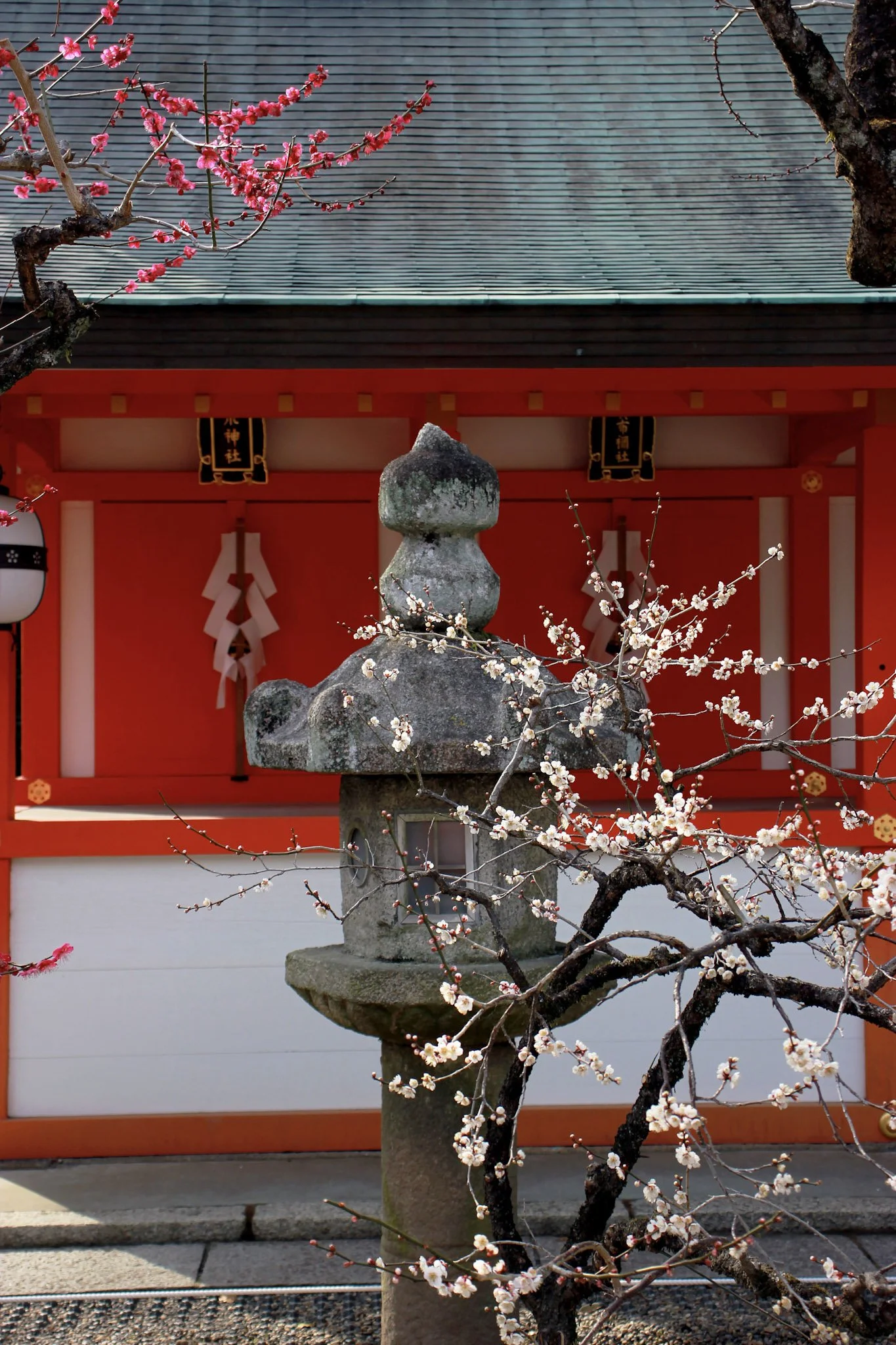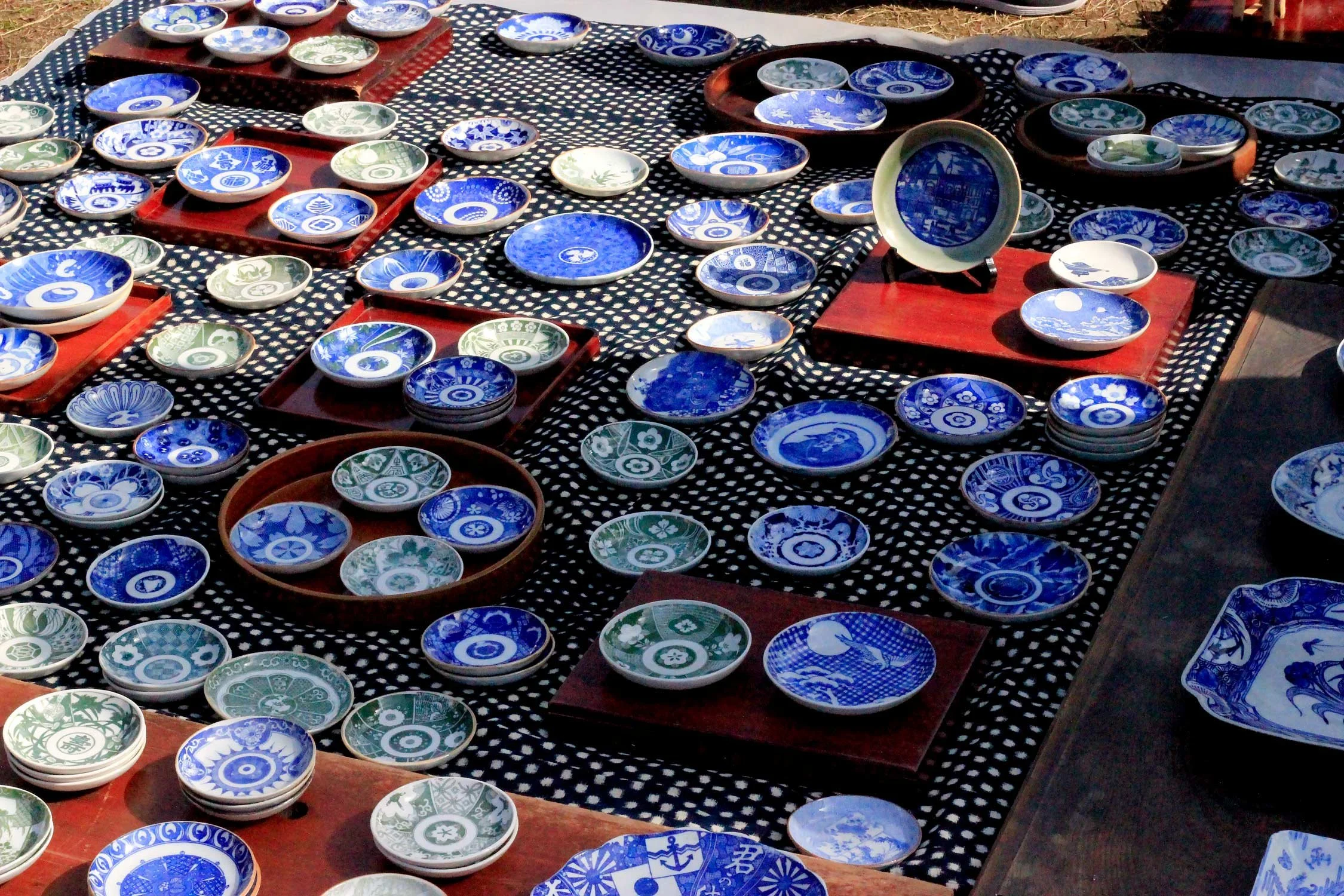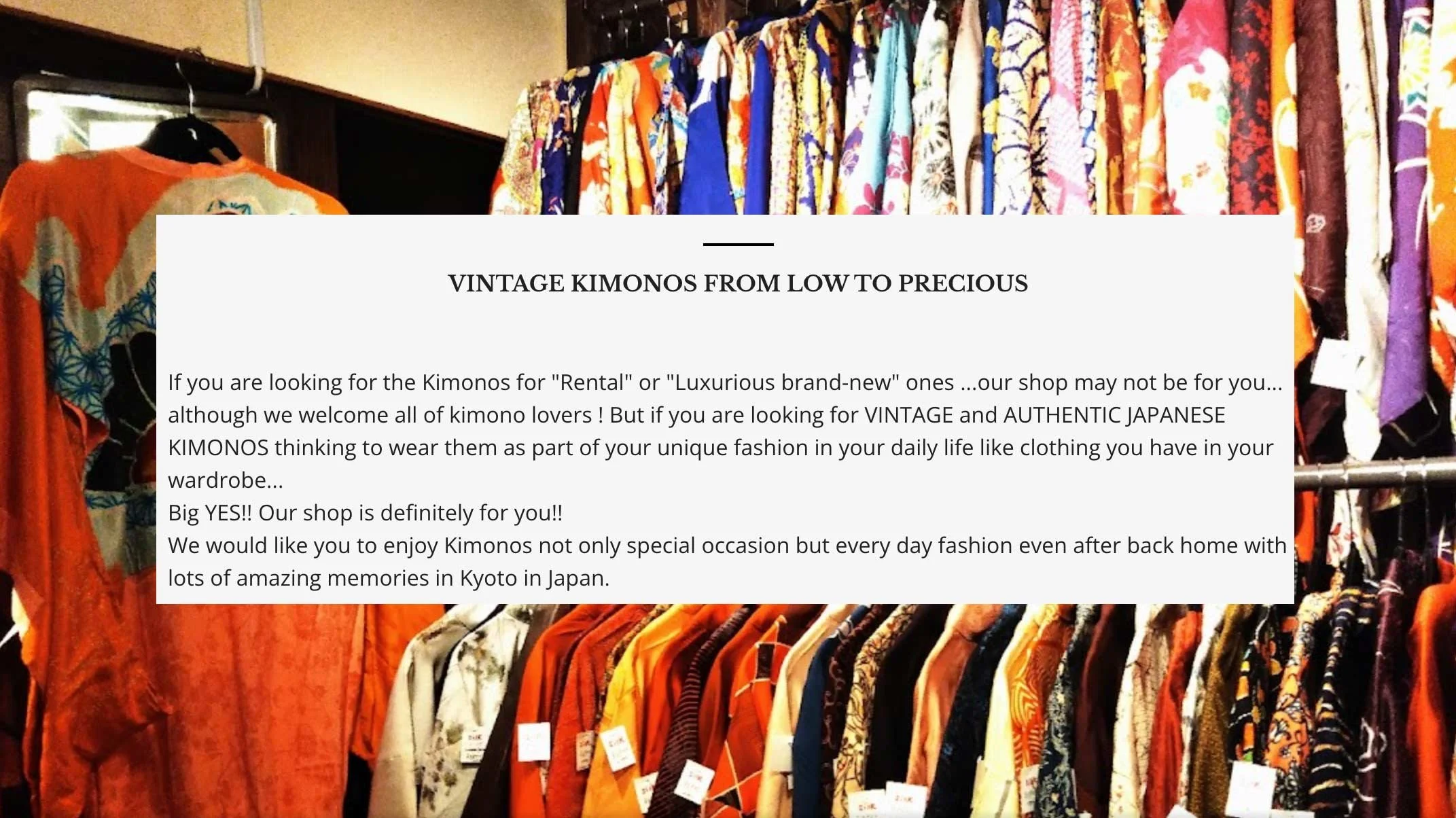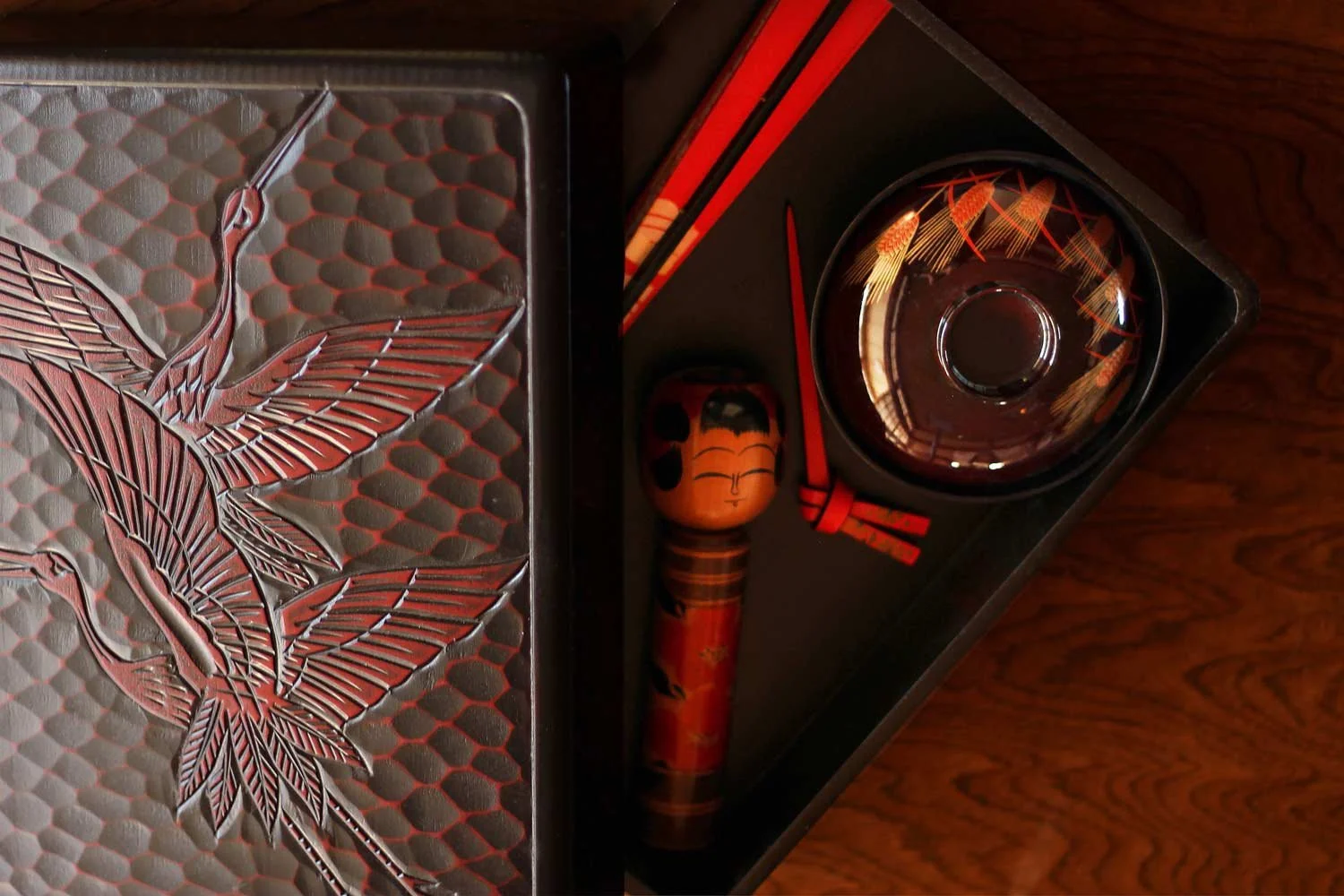Kyoto: Vintage kimono shopping guide
⏳ 6 min read + map of locations
My favourite kimono hunting spots
Where do you find all your vintage kimono and obi? This is by far the question I receive the most. So here is a list of my go-to places for kimono hunting when in Kyoto, including flea markets, second-hand kimono shops and recycle shops.
1/ Flea markets
In Japan, the monthly flea markets held at shrines and temples offer a rich assortment of kimono and traditional textiles. Some of these markets resemble those I frequented in France during my upbringing, where vendors sold various items they no longer needed: clothing, kitchenware, and trinkets. Navigating these flea markets requires vigilance and patience to uncover hidden treasures amidst heaps of unrelated objects. Personally, I adore flea markets and firmly believe in the adage that one person's trash can be another's treasure, making the hunt all the more exhilarating.
However, Kyoto's flea markets present a unique experience. Unlike typical flea markets, many of the vendors are small businesses like antique stores or second-hand kimono shops looking to clear their inventory. As a result, I end up walking through and being treated with exquisite vintage finds, so tempting that I fight hard not to purchase at each and every booth. The ambience is further enhanced by street food stalls and coffee booths, creating a festive atmosphere. One aspect that disturbs me, though, is witnessing the disrespectful handling of kimono at some booths. Piled carelessly on the ground, these delicate silk garments risk damage as people sift through and step on them. To me, this treatment diminishes the true value of kimono, which are exceptional textiles, made of silk for most. I would recommend avoiding those booths and favouring sellers who share your love and interest for kimono.
Kitano Tenmangu shrine
It’s my favourite of all and it is held on the 25th of each month. The market is quite big and you can find a wide selection of vintage and antique kimono and other traditional textiles. Other crafts and antiques booths are very interesting. If you are lucky to be visiting in February, the plum trees will be in bloom and a festival is happening at this time. The garden is worth visiting, it is ticketed but you can also enjoy the trees all around the shrine free of charge.
Toji temple
It is held on the 21st of each month. As vast as the Kitanotenmangu one, if not larger! I visited it less but it is definitely one of Kyoto’s greatest flea markets. It gathers the same kind of sellers as the Kitano Tenmangu one, and some of them are even present in both. The temple itself is also worth visiting as it is a UNESCO World Heritage site of immense historical significance.
Heian Jingu shrine
Held on the 10th of each month, it is a little smaller than the other two, but it is the most curated flea market of Kyoto. It is held right in front of the shrine in Okazaki Park and gathers sellers who are professionals and individuals. You will find the same kind of objects as the other flea markets but also some booths specialized in one particular object, like this ceramic seller in the image below.
2/ Second-hand kimono shops
These shops specialise in kimono and sell a wide range of items, from kimono and obi, but also all kinds of accessories that are needed to dress up in a kimono. They usually sell items in good condition. The staff is trained and knows about kimono (unlike those who pile the kimono on the floor that I mentioned earlier) They can advise on how to combine accessories for example or explain the motif on a particular item for example. Personally, I like shopping in such stores because I want to encourage such businesses to last and keep sharing their expertise. There are three in particular that I really recommend shopping in when you visit Kyoto.
Vintage Kimono An Gion
I make sure to visit every time I’m in Gion. The staff is friendly and helpful, and the selection is great. They also sell some more kimono brands (new), vintage objects and antiques. I love the way they introduce themselves on their website which explains their philosophy very well, and gives you a feel of the owner’s warm personality.
Visit their website.
Modoribashi
You enter this shop’s building as you enter a strange museum or a curiosity cabinet. The atmosphere is quirky and mysterious. On the first floor, you can see an exceptional selection of antique kimono and other goods, with many gothic and retro items for those who want to personalize their kimono looks. The 2nd floor, a Japanese-style room decorated with antiques and unexpected items, is a real museum. A collection of seasonal kimono outfits is displayed on mannequins. On the 3rd floor, there is what they call a flea market, but this one happens every day of every month! It is a vintage wonderland where damaged items are sold for very cheap, it’s perfect for those looking for traditional fabrics to upcycle.
3/ Recycle stores
Although I wrote this article focusing on Kyoto, you can use the following anywhere is Japan to find vintage treasures around you. There are a lot of small shops called recycle shops, which is the equivalent of thrift stores or buy and sells in some other counties. One of the reason for that is the garbage collection system that requires extra payment and planning for picking up your unwanted furnitures and appliances. As a result, a lot of people prefer to bring them to the closest recycle store where it will be at least cleaned and fixed if needed, before being added on the shop shelves. Often these shops also have a rack or two with vintage kimono and haori at very low prices and reasonable conditions. A lot of these shops also sell all kinds of trinkets and kitchenware which can include beautiful lacquerware as well as cheap ceramics, you have to dig to find a treasure.
How to find such shops? You will probably stumble upon them as you go sightseeing but if you are on a hunt, simply enter リサイクルショプ in the Google Maps search bar. It is the Japanese spell for recycle shops and it will indicate all those around you. If you are doing this in the countryside, beware that some of them specialized in car parts or computer games so you should click on them to make sure they are selling what you are looking for (for example, if you don’t see kimono in their photos, they might not have any).
I hope you have a nice shopping! And if you happen to buy too much and it doesn’t fit in your suitcase (oops!), just bring your loot in the nearest Post office. You can buy a parcel to send it to yourself with all your beautiful souvenirs from Japan! Of couse it is wise to check for any import tax regulation in your home country before hand, especially if you are from Europe.
Locations
I pined all the locations listed in this article so you can easily find them on your next visit.

